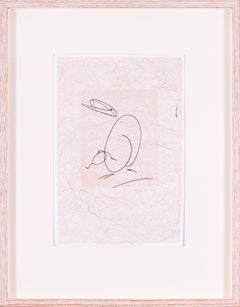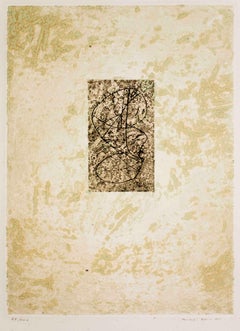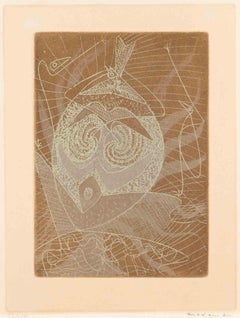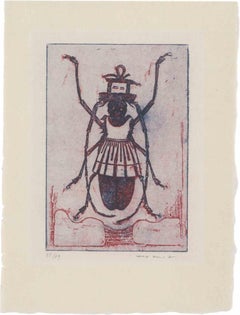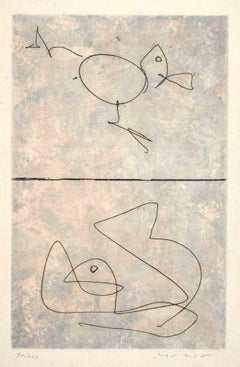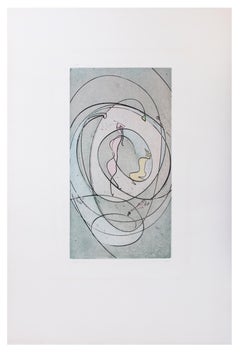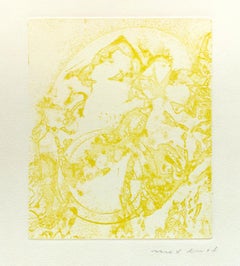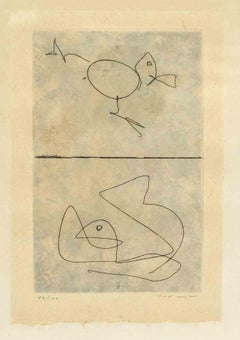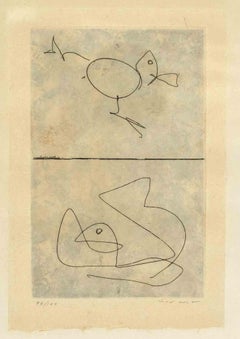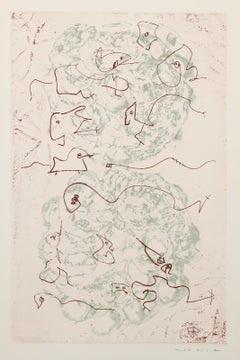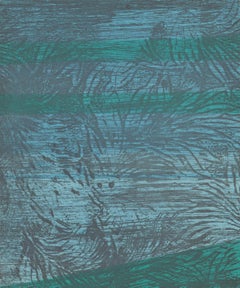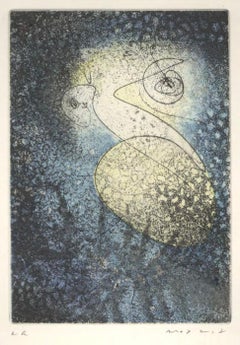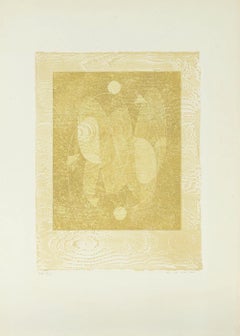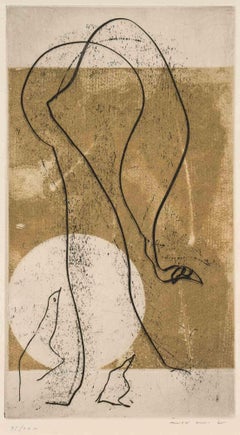Max Ernst Etching
20th Century Modern Animal Prints
Etching, Aquatint
1970s Surrealist Abstract Prints
Etching
1950s Surrealist Abstract Prints
Etching
1970s Surrealist Abstract Prints
Etching
1970s Surrealist Abstract Prints
Etching
1970s Surrealist Abstract Prints
Etching
1970s Surrealist Abstract Prints
Etching
1970s Surrealist Abstract Prints
Etching
1970s Surrealist Abstract Prints
Etching
1960s Surrealist Abstract Prints
Etching
1960s Surrealist Figurative Prints
Etching
1960s Surrealist Abstract Prints
Archival Paper, Etching, Aquatint
1970s Abstract Animal Drawings and Watercolors
Aquatint
1960s Surrealist Figurative Prints
Etching, Aquatint
1960s Surrealist More Art
Paper, Etching
Recent Sales
1970s Surrealist More Prints
Etching
1970s Surrealist Abstract Prints
Etching
1970s Surrealist Animal Prints
Etching
1940s Modern Abstract Prints
Etching
Mid-20th Century Abstract Prints and Multiples
Etching, Aquatint
1960s Surrealist Abstract Prints
Etching
1920s Surrealist Prints and Multiples
Etching
1960s Surrealist Figurative Prints
Etching, Aquatint
1970s Modern Mixed Media
Etching, Aquatint
1970s Abstract Abstract Prints
Etching, Aquatint
1940s Abstract Abstract Prints
Etching
1970s Abstract Abstract Prints
Etching, Aquatint
1960s Abstract Abstract Prints
Etching
1970s Abstract Abstract Prints
Etching, Aquatint
1970s Abstract Abstract Prints
Etching, Aquatint
1970s Abstract Abstract Prints
Etching, Aquatint
1970s Abstract Abstract Prints
Etching, Aquatint
1970s Abstract Abstract Prints
Etching, Aquatint
1970s Surrealist Abstract Prints
Etching
1960s Contemporary Abstract Prints
Etching
1960s Surrealist Abstract Prints
Etching
1970s Surrealist Abstract Prints
Etching
1970s Surrealist Abstract Prints
Etching
1960s Surrealist Abstract Prints
Etching
20th Century Surrealist Abstract Prints
Etching
1970s Surrealist Abstract Prints
Etching
1960s Surrealist Abstract Prints
Etching
1960s Surrealist Abstract Prints
Etching, Aquatint, Lithograph
1960s Surrealist Abstract Prints
Etching, Aquatint
1970s Abstract Abstract Prints
Etching
1970s Dada Animal Prints
People Also Browsed
1960s Surrealist Abstract Prints
Etching
1970s Modern Figurative Prints
Etching, Aquatint
1960s Cubist Figurative Prints
Paper, Etching, Aquatint
1960s Cubist Figurative Prints
Paper, Etching
Vintage 1960s Italian Side Tables
Metal
1970s Surrealist Figurative Prints
Lithograph
1970s Surrealist Abstract Prints
Lithograph
1920s Modern Figurative Prints
Lithograph
1960s Surrealist Animal Prints
Lithograph
20th Century Surrealist Figurative Prints
Lithograph
1970s Abstract Expressionist Abstract Prints
Lithograph
1960s Surrealist Figurative Prints
Lithograph
1960s Figurative Prints
Lithograph
Early 20th Century Modern Landscape Drawings and Watercolors
Watercolor, Pencil
1950s Landscape Prints
Lithograph
1950s Figurative Prints
Lithograph
Max Ernst Etching For Sale on 1stDibs
How Much is a Max Ernst Etching?
Max Ernst for sale on 1stDibs
Born in Germany in 1891, later naturalized as an American, then a French citizen, Max Ernst was a pioneer in the Dada and Surrealist movements, the boundaries of which he pushed with his unconventional methods of printmaking, drawing and collage.
Ernst had no formal art training — and that may have been his greatest asset. He produced his first work following four years serving in World War I. At the time, he was in Cologne, Germany, working closely with fellow Dada pioneers Jean Arp and Johannes Baargeld. His output during this period consisted largely of collages, which allowed him to represent the shards, rubble and explosions from his traumatic wartime experience.
In 1922, Ernst moved to France, where he soon became affiliated with Surrealism, the avant-garde art movement taking shape in Paris. Alongside Man Ray, Joan Miró and a couple of others, Ernst was among the first visual artists to experiment with imagery and techniques associated with Surrealism.
Ernst’s greatest contribution to the Surrealist movement was his invention of frottage (French for “rubbing”), wherein an artist rubs a pencil or crayon over a paper atop a textured surface, and later grattage (French for “scraping”), where a similar technique is applied with paint. Both methods showcase Ernst’s fascination with the unconscious and serendipitous elements of artistic creation, a theme that connected the Dadaists and the Surrealists. Ernst had deep knowledge of psychoanalysis and Sigmund Freud’s dream theories, which were big influences on Surrealists. He was among the first Surrealists to use Freud’s work to examine his own creative impulses. He also published a series of books of his collages, all of which were deeply symbolic and often philosophical.
When Germany occupied France during World War II, Ernst escaped to America with the help of patron and collector Peggy Guggenheim, whom he married in 1941. While living in New York, Ernst’s work and techniques proved instrumental in inspiring the early development of Abstract Expressionism — influencing Robert Motherwell and Jackson Pollock in particular. He later moved to Sedona, Arizona, where he lived with his fourth wife, Dorothea Tanning, a fellow Surrealist and prolific visual artist and poet.
While Ernst and Tanning are largely responsible for Sedona’s reputation as an artist colony, they relocated to France in the 1950s and remained until Ernst’s death in Paris in 1976.
Find original Max Ernst art on 1stDibs.
Finding the Right Prints And Multiples for You
Decorating with fine art prints — whether they’re figurative prints, abstract prints or another variety — has always been a practical way of bringing a space to life as well as bringing works by an artist you love into your home.
Pursued in the 1960s and ’70s, largely by Pop artists drawn to its associations with mass production, advertising, packaging and seriality, as well as those challenging the primacy of the Abstract Expressionist brushstroke, printmaking was embraced in the 1980s by painters and conceptual artists ranging from David Salle and Elizabeth Murray to Adrian Piper and Sherrie Levine.
Printmaking is the transfer of an image from one surface to another. An artist takes a material like stone, metal, wood or wax, carves, incises, draws or otherwise marks it with an image, inks or paints it and then transfers the image to a piece of paper or other material.
Fine art prints are frequently confused with their more commercial counterparts. After all, our closest connection to the printed image is through mass-produced newspapers, magazines and books, and many people don’t realize that even though prints are editions, they start with an original image created by an artist with the intent of reproducing it in a small batch. Fine art prints are created in strictly limited editions — 20 or 30 or maybe 50 — and are always based on an image created specifically to be made into an edition.
Many people think of revered Dutch artist Rembrandt as a painter but may not know that he was a printmaker as well. His prints have been preserved in time along with the work of other celebrated printmakers such as Pablo Picasso, Salvador Dalí and Andy Warhol. These fine art prints are still highly sought after by collectors.
“It’s another tool in the artist’s toolbox, just like painting or sculpture or anything else that an artist uses in the service of mark making or expressing him- or herself,” says International Fine Print Dealers Association (IFPDA) vice president Betsy Senior, of New York’s Betsy Senior Fine Art, Inc.
Because artist’s editions tend to be more affordable and available than his or her unique works, they’re more accessible and can be a great opportunity to bring a variety of colors, textures and shapes into a space.
For tight corners, select small fine art prints as opposed to the oversized bold piece you’ll hang as a focal point in the dining area. But be careful not to choose something that is too big for your space. And feel free to lean into it if need be — not every work needs picture-hanging hooks. Leaning a larger fine art print against the wall behind a bookcase can add a stylish installation-type dynamic to your living room. (Read more about how to arrange wall art here.)
Find fine art prints for sale on 1stDibs today.
